Restoration on North Drumochter Estate section of the Beauly Denny
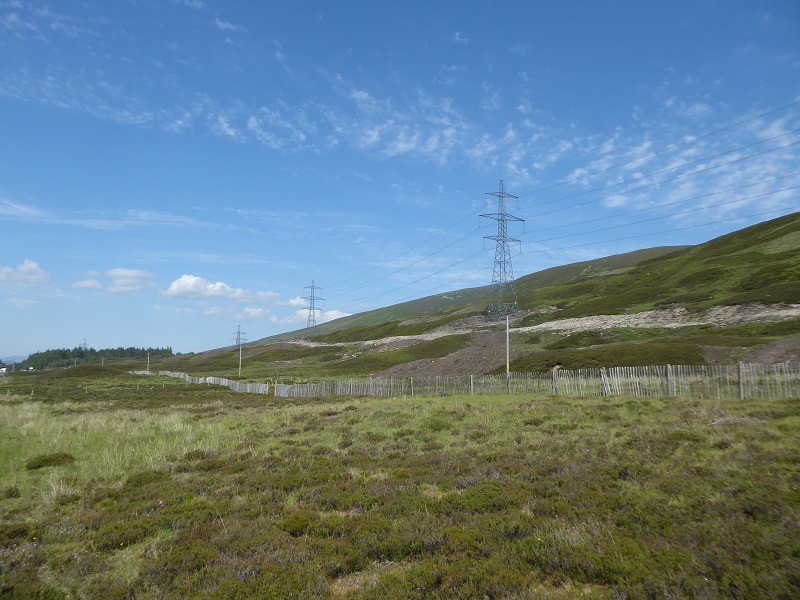 Anyone who has driven along the A9 recently and taken a passing look out the window will be aware of the extensive scars across the hillside north of Drumochter summit, scars created by the Beauly Denny construction tracks which SSE were supposed to have fully restored. Take a closer look and it is also evident that there is a considerable area of “unrestored” ground around the base of each pylon.
Anyone who has driven along the A9 recently and taken a passing look out the window will be aware of the extensive scars across the hillside north of Drumochter summit, scars created by the Beauly Denny construction tracks which SSE were supposed to have fully restored. Take a closer look and it is also evident that there is a considerable area of “unrestored” ground around the base of each pylon.
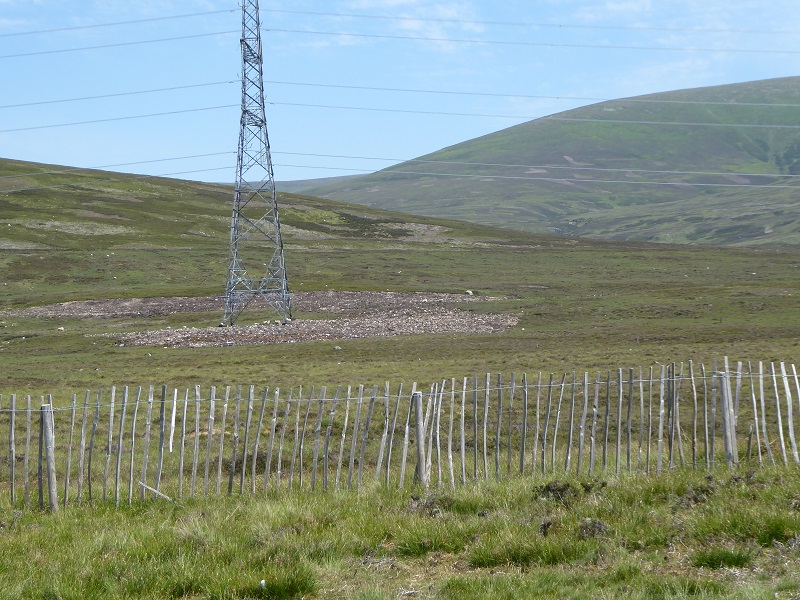
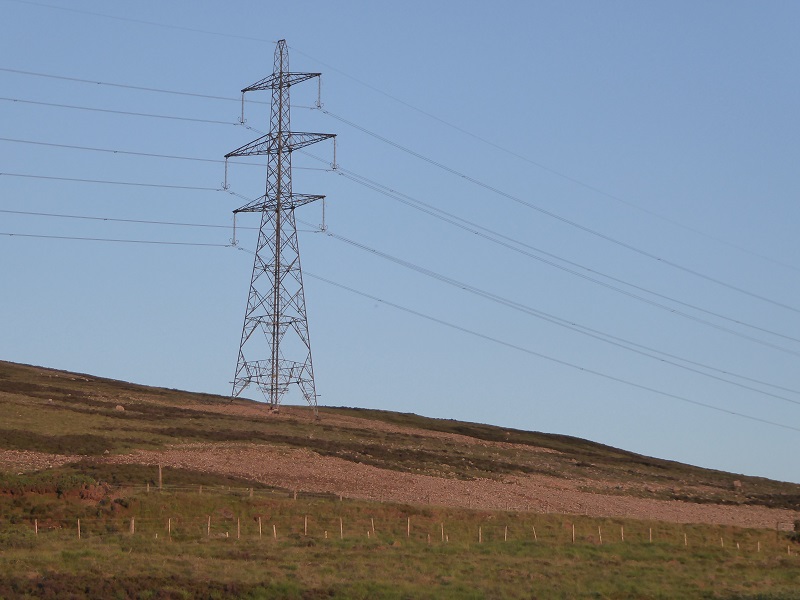
The impact of the failure by SSE and the Scottish Government – who were the Planning Authority for the Beauly Denny – to supervise the construction work properly has had a significant landscape cost. Instead of storing the vegetation and peat removed to create the tracks and towers, they have allowed peat and vegetation to be mixed in with the rocky soils beneath, and then replaced with scant regard to to the pre-existing landscape forms. In the hot dry weather the exposed soils have dried out and what little vegetation there was has died off.
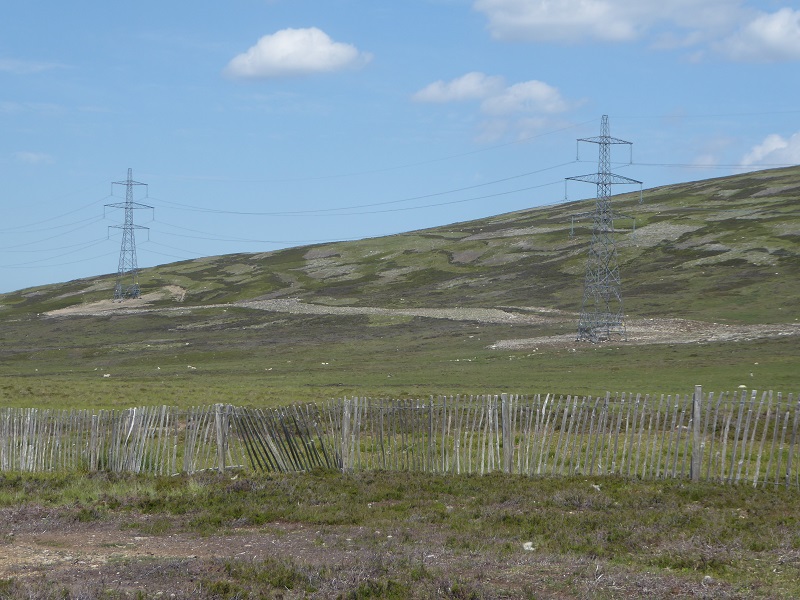
Once wetter weather does return, it is likely new invasive species will colonise the exposed mineral soils. Last year I spotted the invasive New Zealand willowherb on the section of restored track above Drumochter summit. Much of this land is supposed to be of conservation interest and is protected as a Site of Special Scientific Interest, Special Area of Conservation and Special Protection Area.
SSE in their annual report on progress with the restoration last year, besides claiming most of the restoration was on track – an excuse to do nothing – blamed the failure of vegetation to recover in certain areas on over grazing. Interestingly they did not mention the impact of muirburn by the estate (visible in the photos). Fencing has now gone up around at least one these areas a mile or so north of Drumochter summit (sorry no photo). In my view the evidence shows the problem is much greater than what SSE have admitted to.
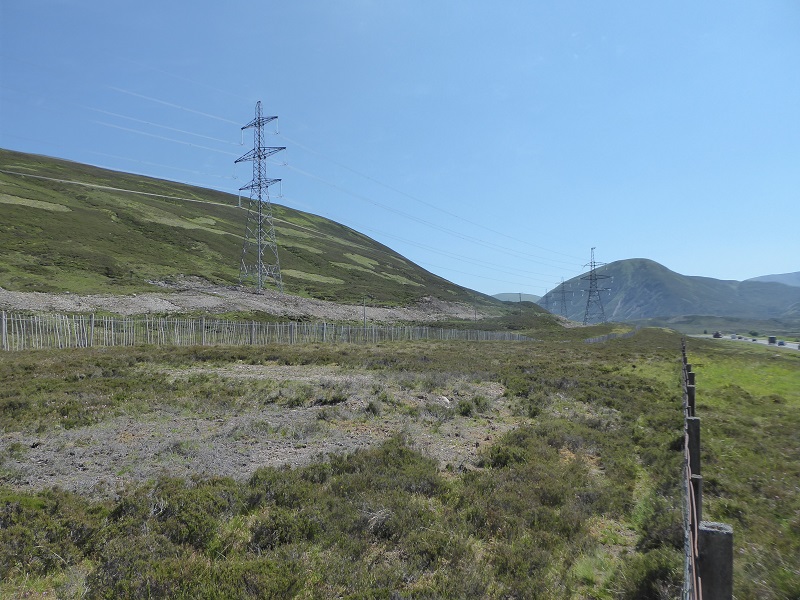
The example set by the Scottish Government and SSE, as one of our largest and most powerful companies, on how to minimise the impact of developments on landscape and ecology at Drumochter is appalling. I believe the CNPA were right to oppose the Beauly Denny but, having given the go-ahead, had the Scottish Government ensured that SSE had abided by the planning conditions none of this additional landscape impact and ecological destruction should have happened.
The Dalnacardoch section of construction track
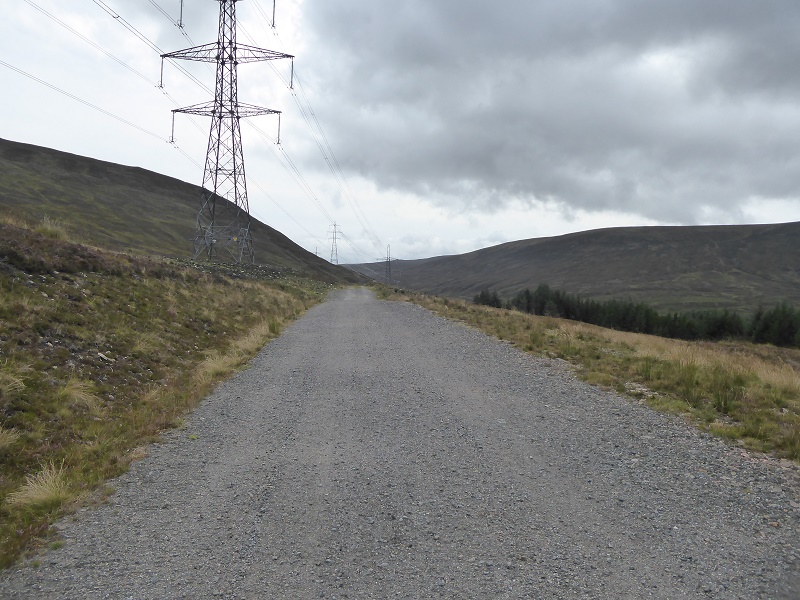
In contrast to North Drumochter, I have had welcome news from planning staff at the Cairngorms National Park Authority about the section of track on the Dalnacardoch track which had been unlawfully left in place by SSE contrary to planning requirements (see here).
The CNPA and SNH met with SSE on site last month and have established that while most of the construction track did run along the Wade’s Rd, as required by the Planning Consent, it has not been properly restored to resemble the landrover track which was here previously and is far too wide (up to 7 metres) for most of its length. The CNPA has clarified that formal responsibility for enforcement of these planning conditions lies with the Scottish Government – another failure there then – but have become involved in an area that is not their formal responsibility. I think this shows the type of leadership one might hope for and expect from a National Park and its I believe its really positive that the CNPA has put scarce resources into trying to address this issue. Having done so, SSE has now apparently agreed that the Dalnacardoch track needs to be restored. Well done to all the staff involved and also to the Board, who have long been concerned about the poor restoration of the Beauly Denny and who are planning another site visit in the Autumn.
The devil though is likely to be in the detail:
- The only effective way to restore the land here is for SSE to remove all the imported aggregrate it dumped over the moorland to create the track. This will cost a lot of money although, with the dualling of the A9, there is an opportunity to re-use this material on road construction.
- There is at least one section where the construction track failed to follow the line of the Wade’s Rd as required by the planning consent and one question is whether this should be retained to allow preservation of what is a historic monument. That may be decided through a new retrospective planning application to the CNPA to retain the new section of track. A more radical alternative would be to stop vehicles driving beyond this section of track and return it to a walking route.
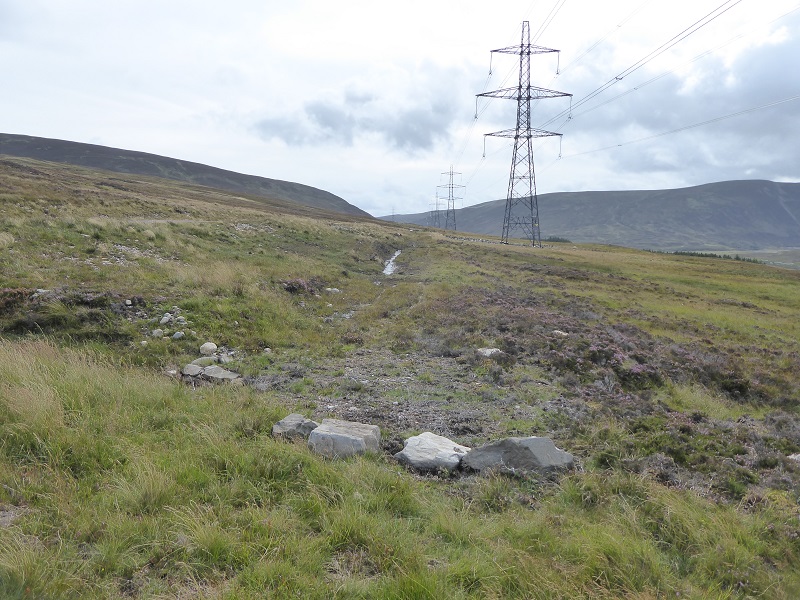
Looking south down the old Wade Military Rd with the edge of the new construction track just visible as a line above on the left.
- And then there is the question of how, without any spare vegetation, the ground below the aggregrate can be restored and the track narrowed. CNPA has told me they are going to consider using vegetation removed by the A9 dualling construction. An opportunity perhaps not just for SSE, SNH and the CNPA to try out and demonstrate new restoration techniques which could then be applied to the section of track on the North Drumochter estate.
What needs to happen
Until the Dalnacardoch track was covered on parkswatch NO-ONE, whether from SSE, the Scottish Government, SNH or the CNPA appears to have checked whether the Beauly Denny planning conditions had been met. There now appears to be agreement from the agencies involved – if not the Scottish Government – that the track should not have been left and needs to be restored. This is most welcome. One would hope lessons will be learned from all concerned about the need for staff to have the time to fully understand planning conditions and then to onitor these to ensure they are adhered to.
Looking forward It would help if all the public agencies involved committed to making any documents and agreements about the restoration public and consulting where appropriate. SSE has apparently committed to producing a Construction Method Statement for the restoration at Dalnacardoch, another welcome step in the right direction, but without transparency many of those concerned about what has happened at Drumochter will be left wondering. The documents should therefore in my view be published, whether on the Scottish Government Energy Consents website, the CNPA Planning Portal or SNH’s website.
The first part of this post demonstrates that a similar approach now needs to be taken to the restoration of the Beauly Denny construction tracks and pylons on the north side of Drumochter on the north Drumochter estate.

Nick, interesting stuff here. I live near Inverness and there is a huge amount of work going on to replace old pylons and clear underneath power lines. This has led to numerous Balfour Beatty sites popping up (I can think of six or seven within seven miles of our house off the top of my head) and hardstandings being constructed to allow access for heavy plant machinery. Whilst running last night at Craig Dunain above Inverness I noticed various tracks used by walkers, runners and mountain bikers have been ‘upgraded’ with imported aggregate for access. It will be interesting to see how these paths are restored – will the Highland Council e-planning portal have this information or would it be enshrined within existing wayleaves?
Steve, very interesting to hear what is happening round you. My understanding is matters directly related to pylons etc are either permitted developments or dealt with by the energy consents unit at the Scottish Government but that tracks etc would be dealt with by local Planning Authorities UNLESS they are part of a new scheme as with the Beauly Denny or the Glen Falloch Hydro scheme. The Scottish Government however landowners who want to retain tracks for schemes approved by the them to make new planning application to the Planning Authority, as the North Drumochter Estate did to retain a section of track and as the Glen Falloch Estate did to retain all the tracks that mar Glen Falloch. Its therefore looking on the Highland Planning portal – do a map search on your area – to see if there are any applications lodged with the Council but if not contact the energy consents unit. They were very helpful in giving me links to B-D documentation which was not actually on their website!
Nick, thanks for the info. There is nothing on the HC planning portal so I will get in touch with the Energy Consents Unit. I imagine this work will continue down the lines as many pylons will need replaced, the scale of the task is quite mindboggling.
Well done, Nick, in keeping this issue alive. I fear you will need to return to this issue many times in the future. It’s also pleasing the see CNPA doing what it can to try to remedy this problem. My concern is that the Scottish Government, which has the enforcement powers, seems to be silent on this issue – we need a clear statement from Fergus Ewing MSP on what went wrong and what the Scottish Government intends to do to enforce this restoration work. Unless SSE is forced to commit to a regularly monitored plan, the restoration work will just drift and, as is suggested, surplus vegetation from the A9 dualling is part of the solution, this will get forgotten whenever the dualling project goes ahead.
I am in Angus and we will be affected by the proposed Kintore to Tealing proposed overhead pylons. Our campaign group has become aware of ‘Cable Plough’ technology originating from Wales, a company called ATP. Alas it is too late for some areas but this ‘plough’ would have avoided all the issues mentioned here. The problem will be persuading SSEN, ScotGov and suchlike that it is a better, quicker and cheaper alternative with minimal impact to the land, no haul roads required and obviously less destruction to the habitat and wildlife. I have just read a statement from Mr Jason Thomas who owns the cable plough company, ATP, which confirms that it can be used to install 400kv projects. I am saddened that this has not been considered before and applaud the work you are doing to rectify the destruction left behind following SSENs construction of pylons.